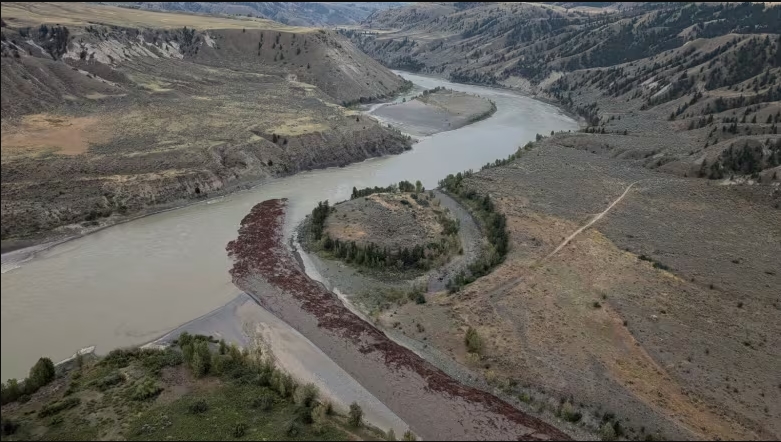Unstable B.C. Landslide Site Continues to Threaten Chilcotin River Ecosystem, Salmon Impact Unclear
Liam O'Connell
11/21/20242 min read


The site of a massive landslide that temporarily blocked British Columbia’s Chilcotin River in late July remains unstable, with further slope failures and potential risks to salmon populations still under investigation.
The Tsilhqot'in National Government, working with federal and provincial authorities as part of a salmon task force, says there have been three significant slope failures since the initial slide. A statement released Tuesday warns that substantial material at the site could still shift, potentially blocking the river again.
The most recent slope movement occurred on Nov. 8, temporarily blocking the river for three hours and stirring up sediment. This latest slide highlights the ongoing need for research and risk assessment to evaluate the impacts on salmon and other aquatic life, according to the task force.
Concerns for Salmon and Steelhead Populations
The Tsilhqot'in National Government has flagged “extreme conservation concerns” for Chilcotin River steelhead, a species already under pressure. Limited stock assessment data is available, but recent fieldwork confirmed the presence of some adult steelhead above the slide site, offering preliminary evidence that the fish are managing to pass.
Steelhead typically migrate into the river in October and remain until spawning from May to June. However, sediment and flow disruptions from the initial landslide and subsequent slope failures may further challenge the population.
Additional fieldwork is planned next spring to collect more data on water quality and steelhead survival.
“Given the months-long period that adult steelhead spend in the Chilcotin watershed, water quality and flow impacts from the initial slide and ongoing sloughing may have specific impacts on this population,” the Tsilhqot'in National Government said in the statement.
Immediate and Broader Impacts
The landslide in Farwell Canyon, located south of Williams Lake, initially dammed the river and formed an 11-kilometre-long lake behind the blockage. When the debris broke free nearly a week later, it sent a surge of water and debris downstream, triggering flood advisories across the region.
The Tsilhqot'in National Government says aerial monitoring of Interior Fraser coho salmon in the Chilko River, a major tributary, has not shown any significant red flags regarding unusual spawning behavior or migration patterns. Another flyover planned for November will help refine return estimates for this population.
“Information to date shows no red flags regarding significant impacts to [Interior Fraser coho] migration from the Chilcotin landslide,” the statement says.
Ongoing Assessments
Fisheries and Oceans Canada is leading an effort to quantify the slide’s effects on migrating salmon. The agency is also planning to assess changes to the river’s channel to better understand the long-term implications of the landslide and future risks to the ecosystem.
The task force says it remains committed to monitoring and addressing the situation to safeguard the Chilcotin River’s salmon and broader aquatic ecosystem.
News
Stay updated with the latest BC news stories, subscribe to our newsletter today.
SUBSCRIBE
© 2025 Innovatory Labs Inc.. All rights reserved.
LINKS
